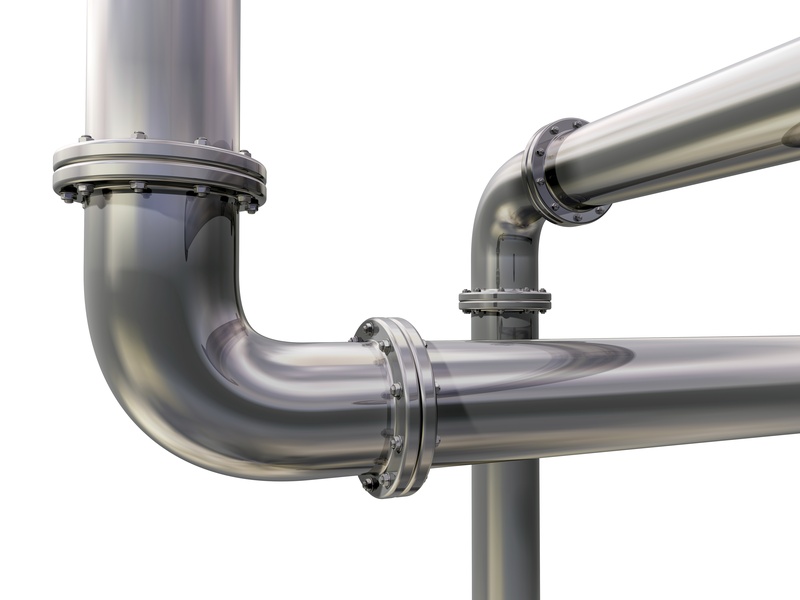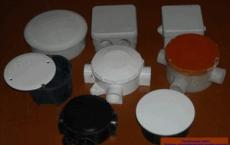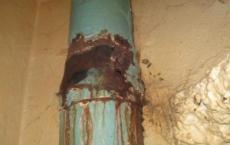How to properly dig a trench with a water pipe. The rules for laying pipes for water in the ground are important parts
Buyers are increasingly choosing pipes on a polypropylene basis. The products are highly demanded that provide operational characteristics, no problems with installation, an affordable cost indicator.
Producers say that they serve not less than 50 years. Enough and minimal skills in order to perform such work as laying a water pipe from poly propylene pipes in the earth.
 The first stage in any installation of the water supply system is to dismantle the sections of the old pipeline. Steel products often require replacement in full.
The first stage in any installation of the water supply system is to dismantle the sections of the old pipeline. Steel products often require replacement in full.
Mounting with the help of Bulgarian is the most convenient and simple solution. After this, proceed to laying polypropylene pipes of a new water pipe.
Rules for laying in the ground with your own hands
GOST says that for laying in the ground, pipes are required to have diameter not less than 32 millimeters. For convenient and quick installation a set of fittings is purchased.
This sequence of actions is performed,.

Normative documents: conditions and requirements of the pipeline
Norms determine the laying of any pipeline, regardless of what material it is from. Many technical issues are regulated in the so-called SNiPs.
They provide security, allow you to carry out any kind of work. Here are a number of requirements that must be fulfilled for laying in the ground.
- Accounting is required for the point at which the ground freezes. Its level is often 1.4 meters. In winter, the water inside the aqueduct simply freezes, if it is below. The operation of the water supply will become impossible.
- The gasket and its method will vary depending on what structures and structures are already present on the territory. And on the availability of highways, communication networks, trails. It is better to turn to specialized firms, if there is no complete certainty about where to conduct the installation.
- The features of the ground and relief are important for those who are laying water under the ground.
Possible problems
Sometimes it happens that the structure of the ground does not allow digging the earth at the required depth. Or ground freezing of the earth occurs with such force that the water pipe is damaged.
But the output can always be found. For example, to make a puncture if the earth is caught too loose. First, a steel pipe is laid in the hole, and a polypropylene pipeline is installed inside it.
Anti-frost protection - heating cables placed along the entire length. But such work is associated with additional costs.
Trenchless methods of laying, finally, will be an excellent solution for those who have encountered an obstacle that can not be bypassed.
Features of trenchless laying
Trenchless installation gives owners several advantages at once. 
- There is no need to destroy buildings or plants that stand in the way.
- To a minimum, damage is done to the environment.
- Time and financial costs are reduced.
There is more than one method.
- Sanitation. It means that old pipes are changed to new ones. Works are carried out in two ways:
- Relining. Inside the old pipes lay a new, polypropylene. The main thing is to see the pipeline in advance. The main thing is to make sure there are no foreign objects and debris. It is also important that the diameters match each other.
- Renovation. A new pipeline is being laid and the old one is being destroyed simultaneously. It is carried out in situations where the original diameter is insufficient.
- Piercing. Actual for diameters over 150 millimeters. The work has several stages.
- Two excavations are dug from both sides of the object, under which we will conduct communication.
- Place hydraulic jack on one side. He pushes a polypropylene tube with a steel tip.
- The pipe gradually increases volumes, and then polypropylene products are introduced into it.
- Connection to all systems.
But the latter method is suitable only for those who are interested in laying small lengths of water pipelines.
What about warming?
But additional protection is often required when laying outside.
For this purpose, for example, special cases are used. The existing water pipe is laid inside another pipe, with a small diameter. What contributes to the formation of an air cushion between the walls of different products. Thanks to this, the heat of the water is preserved.
Either the pipeline is simply poured using polystyrene concrete or foam concrete. This is a monolithic layer, with a base in the form of concrete with a small weight and a porous structure.
Or a heating cable. The latter is laid both inside and outside the structure. The gasket is recommended to be carried out in two ways:
- Two lines parallel to each other.
- Spiral, around the aqueduct.
Not every system is designed in such a way that the pressure in it without problems increases. But this method of protection is able to boast of efficiency. 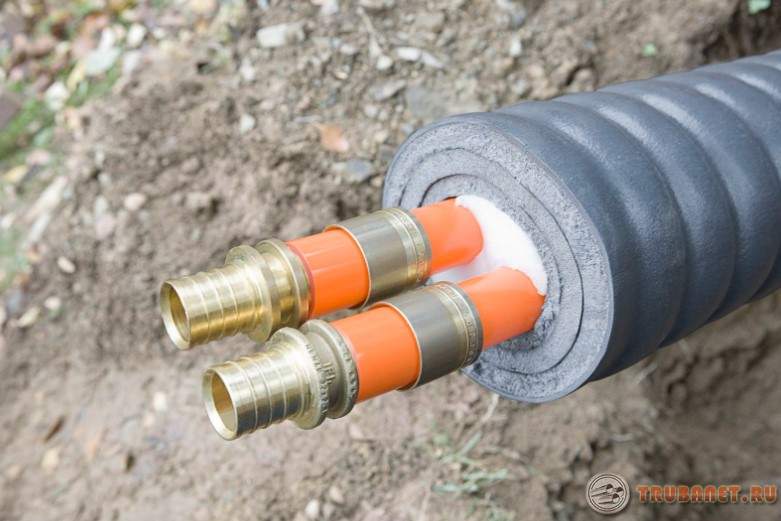
When stored internally high pressure, the liquid does not freeze. Even if there is no physical insulation.
When installing outdoor non-pressure varieties of sewer use the so-called connection in the socket. The main thing is the absence of impurities on the plastic, then the connections will get high tightness. Silicone or liquid soap lubricates the parts requiring joints.
Sealant treatment will provide additional protection during such work as laying a water pipe made of polypropylene pipes in the ground.
Only compliance with all the requirements and technologies will allow obtaining a water supply that will function for a long time. And will help reduce operating costs.
We are engaged in the installation of filters
If there is no scales or sand in the water, then much longer live items such as fittings on toilet bowls, washing machines with automatics, mixers from ceramics. 
It is enough to install the simplest filters, with rough cleaning. Without water treatment filters, it is not advisable to lay the polypropylene pipes by oneself.
Do not give preference to filters that are parsed manually. Inside such structures are rubber seals, whose durability leaves much to be desired.
The preparation process depends on which type of pipe you have chosen. If it's galvanized, then we use the Bulgarian to cut the blanks of the sizes we need with our own hands. You can also do this with a hacksaw.
Metal-plastic or polypropylene products are more convenient to cut at once in place. Even small misses in size will not be terrible.
When joining, preference is given to two methods. For example, through a collector that plays the role of wiring for individual devices, when each of them has its own armature. Or through a simple tee.
We work with steel products
With appropriate tools at hand, for example, such as welding, it is used to connect the structure from metal.
if you have vacation home or giving, then you just need a quality water supply. Delivery of water is carried out via communication highways, which are equipped according to specific purposes and purpose. One of the important issues is the correct connection of the water supply to the private house and compliance with the work of all the necessary standards and requirements. It is necessary to carefully choose the material from which the water pipes are made. Then your water supply system will last a long time and without harm to your health. How to lay a water pipe in the ground you will find out by reading our article.
When choosing a structure for laying a water pipe, it is first of all necessary to take into account:
- what will be its extent;
- what are the operating conditions;
- what is the calculated power.
The main tasks of the water supply system are:
- supply of water for household needs;
- supply of water for watering the infield;
- filling with water of local hydraulic structures, for example, a pool or a fountain;
- ensuring fire safety and preventing fires.
After you decide on the appointment of your water supply, you can go for the purchase of materials. Which ones to choose depends also on the design of the water supply network.
For today, pipes made of steel and cast iron are no longer considered to be the most qualitative and reliable. After all, as they are in operation, they inevitably undergo corrosion formation, and eventually will be destroyed due to the impact of unfavorable factors on them. In addition, pipes made of such material are difficult to mount. It should be noted that modern water supply must meet the following requirements:
- resistance to damage of various types;
- be simple and reliable;
- ease of installation;
- have a long service life.
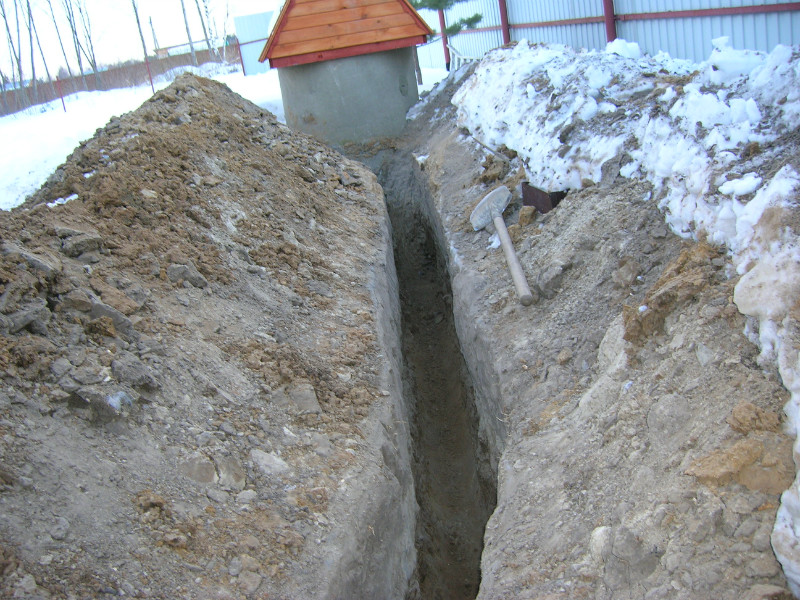
All of the above requirements are met polypropylene pipes. They can be used for different purposes, while they will remain effective and reliable in almost any environment. The main advantages of polypropylene pipes are:
- simplicity of installation;
- resistance to mechanical stress;
- resistance to corrosion;
- long service life;
- reliability;
- strength;
- safety when filing drinking water.
Before proceeding with the laying of the water pipe, it is necessary to develop a project. Particular attention should be paid to the type of soil on your site. It is also important how the relief and the area of the plot are on it, because the length of the water pipe depends on this. In addition, it is necessary to clarify the level of the ground freezing point in the area.
Usually it is located at level 1.2 underground. This parameter is very important, because if you lay the water pipe at a higher level, then due to severe frosts in the cold season the water pipe will simply freeze and to restore it, you will have to wait for spring. If you live in the northern region, then the pipeline is best also to be insulated. It is not difficult to do this, as today a large number of various insulation materials for pipes are on the market.
When the project is approved and all parameters are defined, both constructive and technological, it is necessary to dig trenches. Their depth and width should correspond to design values. Typically, the standard depth of the trench is about 600 mm. To dig a trench you will need:
- shovel;
- cord;
- tape measure for marking the site;
- building level;
- sand.
The ready trench must be leveled and a sand cushion should be poured onto the bottom with a layer of approximately 150 mm. Sand must be watered, especially in summer, and then rammed.
![]()
It should be noted that when choosing the place where the water pipe will be installed, you should carefully check the availability of various kinds of communications there, such as electricity, sewerage or alarm system.
Piping installation
One of the main tasks of installing a water pipe is to provide a slope for the water supply system. Standard requirements are for 1 meter of pipeline approximately 3 cm of slope. All elements of the pipeline are connected with each other using a special lubricant. If the pipes are made of polypropylene, then special polypropylene solder is used for their installation.
When laying pipes will be suspended, it is necessary to test the water supply system, applying a different head and at different times of the day. Testing should be done about two days. If all the work was done qualitatively and according to the standard, then the duration of its operation will be quite long.
Most of the communications are laid underground. The reason is simple: the ground is a safer environment than air. Scope groundwater much less than the amount of precipitation, the effect of temperatures is noticeably weaker, and to damage the pipeline located in the ground is much more complicated than that located on the surface.
Which of the water lines is best used depends on many factors.
Water pipes: varieties
At the dacha owners have to deal with the arrangement of cold water supply and extremely rarely - hot. Usually, country plots are removed from the city and this kind of communication is not available here.
For filing cold water the following products can be used.
- Steel water pipe - high strength, affordable cost and low coefficient of thermal expansion provide the metal rolling product with unconditional leadership in the supply hot water and heating - if it comes to highways. When servicing dwellings, shortcomings often become the reason for refusing to use them. The heavy weight, complicated installation, the reduction of the working cross-section with time makes it necessary to search for an alternative.

The propensity of steel to corrosion when laying systems under the ground is a secondary factor: the corrosion rate is 0.1 mm per year, which ensures a service life of about 45-50 years.
- Plastic plumbing - in the category includes all products of polyethylene, polyvinyl chloride and polypropylene. In most cases, the material is not indicated in the labeling of such a pipeline, since it is more important specifications. Unconditional advantages include ease, flexibility, which allows you to build a system of high complexity, complete chemical inertness, high throughput. The disadvantage is a low mechanical strength, which when placed in the ground does not matter.
Another disadvantage is the instability to high temperatures, where it is more unpleasant. But since the dacha usually requires running water for cold water, this defect is neglected.
- Metalloplastikovye - polymer pipes, reinforced with aluminum. They are stronger than plastic in strength, as well as in resistance to temperature. Products can be safely applied for hot water and heating systems. However, the cost of the reinforced pipeline is much higher. In the photo there is a sample of products.
Which pipes are better for water supply
Many factors are important for the arrangement of communications at the dacha: the distance from the source of water and its nature - well, main line, soil quality, depth of occurrence, water consumption and so on. All this must be taken into account.
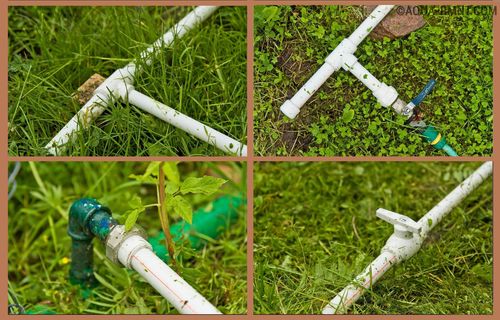
Water source
- If the water pipe is connected to the central highway, the only thing to consider is the availability of existing communications. The pipe into the ground is laid to a depth below freezing of the ground. This is a prerequisite.
- Water supply from the well is rarely possible to place under the ground, and even at the required depth. In this case, the pipeline must be insulated. Preference is given to steel, since they are much more resistant to cold.
Nature of the soil
- Sandy, clayey soils are fairly light and loose and do not exert significant pressure on the pipeline. Plastic and metalloplastikovye water pipes of the appropriate diameter and with the required wall thickness are coping well with the task.

If it is necessary to install a relatively large diameter water pipe, it is better to choose corrugated products. The stiffeners increase the strength of the material, without loss of elasticity.
- The rocky ground is much more demanding. It is rare, but the soil prone to progress is a common problem. Steel conduits are required here, since plastic ones will not withstand such a strong pressure.
Depth
Plastic water pipes are produced with a different class of rigidity, which allows you to choose the optimal solution.
- SN 2 - Underground laying at a depth of up to 2 m is allowed. At the dacha this option is realized most often.
- SN 4 - installation is planned at a depth of 3 m. Both smooth and corrugated water conduits are used.
- SN 6 - maximum depth of 8 m.
- SN 8 - the water pipe can be collected underground at a depth of 10 m.

Steel water pipes do not have any depth limitations. You just need to pick up a product with sufficient wall thickness.
A water pipe in a private house or on a land plot is one of the benefits of a comfortable life that can be built without the help of professionals. The laying of a water pipe in the ground in particular does not present serious difficulties, but requires attentiveness to detail and strict adherence to the course of work.
In this article we will consider:
- how to make the right choice of pipes;
- how to build a water supply system by the standards of SNiP;
- how to avoid the main problems;
- as .
And we will talk not only about the household water pipe (designed for pumping drinking water), but also about the irrigation (irrigation) system of irrigation (irrigation) of plants in the garden or on a private plot.
Technical Foreword
To morally (and not only) prepare for the work, of course, you need to learn a little general theory.
There are two ways of laying a water pipe: on the surface and under the ground. In this article we will consider the latter option.
Pipeline laying is carried out by one of three methods:
- Excavator digs a trench, the rest of the work is done manually. It takes a lot of special equipment.
- Horizontal drilling (HDD), trenchless technology. Puncturing the earth.
- Shield gasket - this method is called collector. The structure of tunnels for communication.
Technology in each case is different, we will consider in this article a method that can be done with your own hands (shovel instead of excavator, drilling).
Variety in the choice
Pipes are made from various materials (even from wood) and their combinations (for example, from aluminum and polymers), since this product is used not only for water, gas, sewerage; but also in construction (metalwork), and in mechanics. Therefore, it is so important from all the variety presented in the sale, to know exactly what is ideal for your purposes.
For a water pipe, steel welded or seamless pipes are ideally suited. They in turn are divided into classes: for carrying out gas, oil, profile and seamless - this is what you need for laying in the ground. Among them, preference is best given to galvanized (coated with a layer of zinc), they are more resistant to corrosion.
For the connection points, the pieces (hose) are used. They can be reinforced (with reinforced additive) and corrugated. The cheapest option is conventional pipes.
Of course, the pipes differ in weight, length, diameter. GOSTs determine the required diameter for an underground water pipe, and you can make a choice of wall thickness and length yourself (from what is on sale).

Also different pipes of different pressure are distinguished.
As for materials for the water supply, use cross-linked polyethylene, copper, polypropylene, stainless steel and galvanized pipes.
Yes, the choice is huge, but on what all the same to stop? Let's turn to the choice of the majority, the market leader and the favorite option.
The best choice
For works that are waiting for us, you can choose (plastic). HDPE:
- do not rust;
- maintain sufficient pressure (PN10, not PN6);
- stronger than them and not required;
- carry frost, under the influence of temperatures stretch due to its elasticity;
- well bend, so comfortable in the gasket;
- available at a price (30-35 rubles).
The pipe for laying water in the ground should be 32 mm in diameter, 2.4 m in length - this is GOST 18599-2UUI. To it you need to buy fittings for simple and quick installation, no tool is required. Fastening reliably, will not flow.
Stages of construction of water supply system
All works will be held in the following sequence:
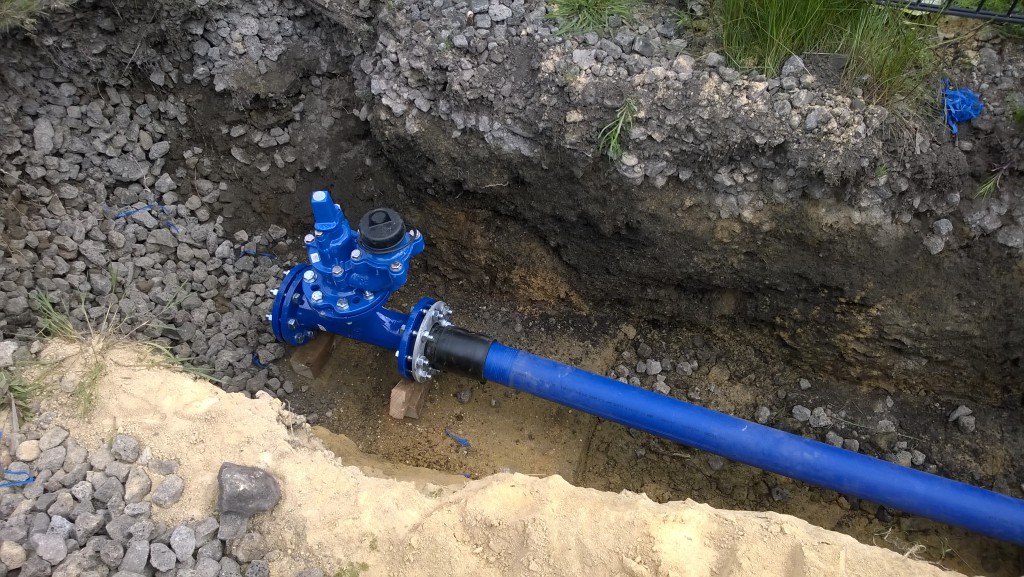
- Dig a trench depth of 1.8 m, for the north of Russia - more than 2.5 m. Remember these recommended standards. They are associated with the freezing of soil, at this depth the temperature in winter reaches -17 and even -20 C. This indicator varies from the duration of frosts, from the characteristics of the soil itself (density, humidity). But craftsmen advise to dig deeper (2 m), just in case. The width of the trench is 0.5 m. Do not forget about the construction of the gradient.
- The withdrawal from the house through the foundation. If it is monolithic or from blocks of PBS, a punch is required. You can buy a professional with a drill for 40 or a low-power household for 24 mm. Drilling in the latter case will take more time - 3 hours. The mode is set as follows: 4 strokes. And then, having reduced the drilling regime by half, from the side of the trench. The thickness of the hole should be 50 cm to pass the pipe.
- Protection. Water in the pipe should not freeze. On sale there are heating cables. They are very expensive. Therefore resourceful craftsmen lay the field cables P-274. Inside, they also have veins (copper, steel), which create a "heating" effect. It is connected to electrical network, but not 220 W, enough 36 W to heat up to 60 C. The right voltage is obtained through a transformer (power supply). The instruction for its installation is not complicated: the cable is wound on the pipe, a step of about 10 cm. The end of the cable must be sealed by connecting it to the beginning using a terminal strip. Start the connection.
- Mounting sensors. This is an optional action, but very useful. Only three sensors (40-70 rubles) along the pipe, and you will know about the temperature of the ground, and therefore, you can affect a particular point. The fact is that modern sensors are equipped with automation: when the temperature drops to the specified mark, heating is turned on. They can also be connected:
- to the notification system that transmits information about changes in temperature and the activation of heating to the voice device or even to the phone in the SMS;
- master of the network (it is equipped with a special program that connects all the elements of the system into a single whole).
The sensors are inserted into heat-resistant tubes. The sealant is also used for protection. Apply plastic glue on top.
- Warming of the pipe. This is a mandatory procedure, even if there is expensive heating cable and sensors. No master making a water pipe for himself, will not dig a trench until he covers the pipe with a heater. It increases the efficiency of the heating system, protects water with a prolonged absence of flow (if suddenly the owners left). So, the pipe is covered with a thick (13 mm) layer of special insulation, for example, inexpensive (25 rubles per meter) and a quality Energoflex.
- Isolate from ground. To protect the pipe and cable from the mechanical action of the ground, the craftsmen are advised to put them on top of sewage pipe. In the joints, insert the rubber sealing rings. So you will protect and a layer of a heater from getting wet and "karyabanija" a ground, and the pipe. So you can reduce the depth of the trench to 50 cm and protect the water from freezing to -20 ° C.
- We finish the installation of the pipe in the trench. The beginning of the pipe is pushed through the hole in the ground. The end is fixed in the well or borehole.
- Testing the system. We connect to the network through a transformer, we control the sensors and make sure that everything works, that everything is done qualitatively and safely (the cable does not melt, the pipe does not burst and does not flow when heated).
Possible difficulties
Experts note a number of problems that everyone may face:
With all the rules and advice of the masters, the system will last you for many years.
Features of the watering system
Its creation will require the construction of entire highways. Their length, frequency of use and power will determine the necessary materials, the scheme of work.
The technology of installation of the system requires the development of an individual project. Make a simple and understandable scheme for yourself, on which you must find your place:
- plants (lawn);
- trenches;
- place on the scheme structures and areas that you do not need and should not be watered (move the entire irrigation system away from them);
- automatic irrigation system (or pump);
- we place on the entire length of the trenches sprinklers, valves and controllers.
Next, in the first place, we also prepare trenches. Direction, width (usually 50-60 cm) and length - according to the project. Stock up with a roulette and construction level. At the bottom of the trench lies sand 10-15 cm thick, it is watered and tamped. Further, polypropylene pipes are also taken, they are laid in a trench, their ends are brought to the source of water. The necessary components are connected to the system: pump, filters, pressure regulators, valves, sprinklers and controllers. Watering your own structure is ready.
Setting up a water pipe in the country, in the garden, on the countryside or in a private house, we can build a watering system or a system of water supply to the house. In any case, the work will be carried out according to the above scheme. And laying a water pipe in the ground will require you to be ready to perform all the recommended works. But in the end, you get the ideal result - a smoothly working system for supplying drinking water to the house (or irrigation).
Winter water supply for a country house The only way to ensure comfortable living all year round. For this, in any case, the laying of water and sewage in the street - external or domestic. Despite the fact that the water pipe can not be called a dangerous or complex engineering system, its installation also requires knowledge of certain norms and rules. Only their observance guarantees long service without gusts and freezes, as well as the purity of drinking water and the stability of the declared head in the project. But all of them do not require special equipment or equipment, and it is quite possible to make such a pipeline on site with their own hands.
How to make a water supply in the country: the width of the trench and the depth of the laying of water pipes
The first thing you need to take care before making a water supply is obtaining all the permits. If it is a question of connecting to central system water supply, it should be a full-fledged project indicating the location of the tie-in and the working head of the system. Many organizations that serve such systems insist on carrying out a tie-in with their staff specialists. For autonomous water supply, this permission is not required. In addition, it is necessary to check the site in the places of trench digging for the presence of already laid communications (communication and power cables, gas and water, sewerage). To do this, the site plan must be provided to the appropriate institutions, where they will mark the places of passage of engineering systems and the depth of occurrence.


After that, you can proceed to the trench digging. At the intersection of the pipeline with other communications, excavation works are carried out manually, in other areas, special equipment is allowed. The width of the trench when laying the water pipe SNiP is regulated only for large diameter pipes or at a depth of more than 3 m. Such cases in private construction are not considered, therefore, when handmade it is usually done 0.5-0.8 meters, and when using special equipment it will be equal to length of the cutting edge of the bucket.
The depth of the water supply depends on the climatic conditions. The pipe should be at least 415 mm below the zero temperature penetration into the ground. For northern latitudes this will be from 2 meters or more, for the middle band 1.5-2 meters, for the southern regions - 1-1.5 meta, in these cases deepen the pipeline to avoid heating the water in a hot period. But in order to reduce the amount of excavation work, the depth of laying of water pipes can be reduced by using heated pipes (air or heating cables). Also slightly reduce the depth, it is possible using heat-insulating materials.
The norms for laying a water pipe with parallel laying or crossing with other communications are also regulated by SNiP. When parallel installation, the horizontal distance from the water pipe must be observed to:
- water supply - 1, 5 m
- sewerage - 0.2 between the outer walls;
- gas pipeline - 1 m;
- power cables - 0, 5m;
- thermal networks - 1, 5 m.
It is possible to lay the sewage and water pipe in a common concrete box.
When crossing with cables and pipelines of various purposes, the water pipe should be laid below not less than 0, 6 meters. If necessary, this distance can be reduced to 0, 25 m. When crossing with sewerage - the water pipe must pass no less than 0, 4 meters above.
For many, the question of how to lay a water pipe in the ground under roads or other cobbled sites is relevant. According to SNIP, it is recommended that such an intersection be made at an angle of 90 degrees (this will minimize the area subjected to heavy loads). In private construction, the so-called punctures are commonly used - knocking out a round hole with a thick-walled steel pipe (the diameter should be larger than the diameter of the laid pipeline) without disturbing the surface coating. In this case, the distance from the top of the water pipe or its case to the surface should be at least 0.6 meters.
Laying of water pipes from propylene pipes: crossing with sewerage and laying under the road
Today, when deciding for themselves how to build a water pipe in the country, many home masters prefer polymer pipes made of polyethylene and polypropylene. They weigh much less and do not require complicated and cumbersome tools in their work. To install such a pipeline of a small private house within one day is able to even one person.
The construction of the water pipe starts from the point of insertion and installation of the inspection well. According to the current regulations, the well must have a cobbled or concrete bottom, the clearance to the central pipe must be at least 15 cm. Immediately after the tie-in, put the shut-off valve and crane to drain the pipeline if necessary. When laying pipes from the well to the house or other consumers, it is recommended to observe a grade of 0.003 or install drainage cranes at all the lowest points of the system for emptying the pipeline. Wells are provided in all places of inclusion in the scheme of shut-off valves in the ground.
Since polymers are subject to mechanical damage in order to protect the pipe from possible movements of soil or stones during winter, it is recommended to lay an external water pipe made of plastic on a sand cushion (100-150 mm), followed by sand filling (100-150 mm layer).

